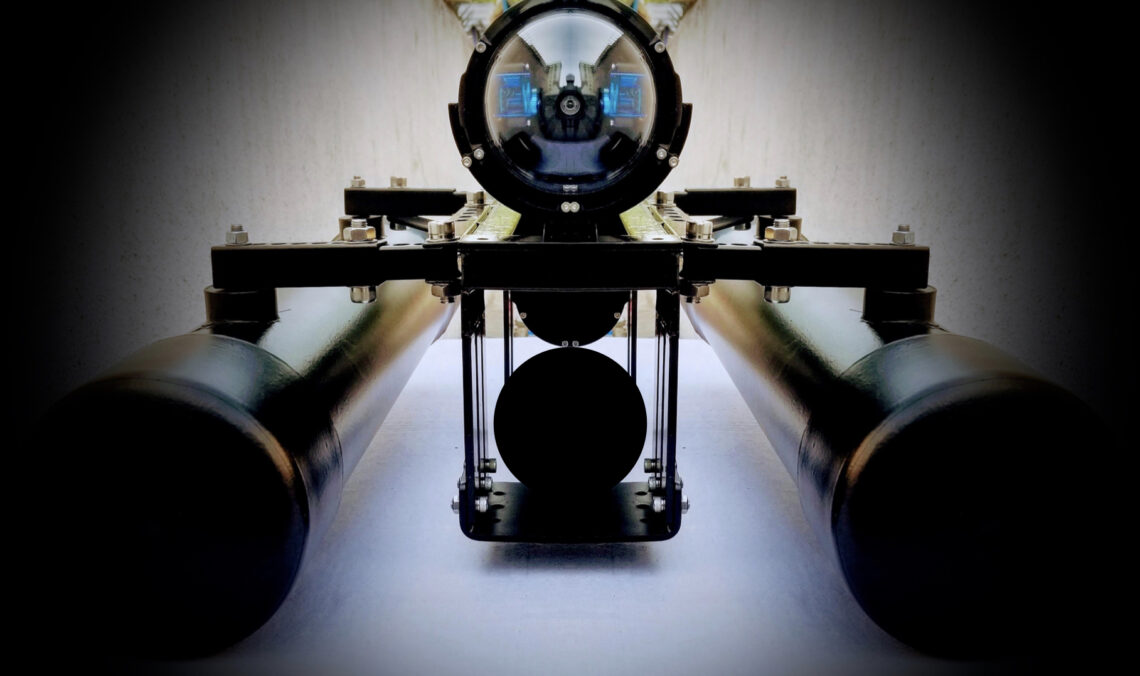A 2014 water leak in a Mumbai apartment complex was the unlikely catalyst for the development of AI-powered software, robotics, and IoT technology that today monitors over 400 million gallons (1.5B liters) of urban wastewater spills and enables the treatment and reuse of 200+ million gallons (800M liters) of water daily across seven countries, including the U.S. The same technology is detecting water-borne diseases, as an indicator of drinking water contamination caused by untreated wastewater, everywhere from Singapore to San Francisco , helping to safeguard the health of over 17.5 million people.
Fluid Analytics’ technology, which is helping utilities to sustainably combat sanitary sewer outflows, preserve clean water, and positively impact public health, is an example of how innovation in developing markets can be applied to the developing world. The company is currently operating in India, Singapore, Hong Kong, the U.S., Canada, Chile, and Spain.
The company’s early AI models were trained on diverse datasets reflecting a wide spectrum of pipeline conditions, ranging from severely degraded to newly installed, mirroring the developmental disparities within the Asia Pacific region. That has turned out to be an advantage, says Fluid Analytics’ CEO Asim Bhalerao, who co-founded the company with Nidhi Jain.
“When we collaborated with utilities in the U.S. and EU, we surpassed competing products solely trained on data from developed cities, thereby establishing our competitive edge,” says Bhalerao. “This success has enabled us to distinguish ourselves as we embark on expanding into North America.”
The use of artificial intelligence by Fluid Analytics to mitigate risks related to wastewater pipeline system failures is key to making cities and urban environments around the world water resilient. Water resilience, now a major business issue, was on the agenda in Davos with companies such as Suez, Coca-Cola, PepsiCo, Deloitte, HCLTech, Unilever, JLL, Microsoft and Salesforce, participating in discussions on the issue.
At the annual meeting in Davos Fluid Analytics was named the winner of the Zero Water Waste 2024 competition for its work in helping global freshwater conservation. The company is a part of the Forum’s UpLink program, an initiative launched in partnership with Deloitte and Salesforce focused on building an innovation ecosystem that supports early-stage startups to scale by connecting them to resources, experts, and funding.
From Sounding Rods To Robots That Crawl, Float, And Swim
Bhalerao, a native of India who earned graduate degrees in computer science (intelligent robotics), and mechanical engineering (robotics) at U.S. universities, was living in the San Francisco Bay area in 2014 when he decided to go home to visit his parents. A notice in his parents’ Mumbai apartment complex said the water would be shut off from 9 a.m. to 5 p.m. while a leak was being repaired. He thought little of it until he returned about six months later for a friend’s wedding and noted that the sign was still there. “It was a two-kilometer pipe so I thought how could this not be solved in six months,” he recalls.
Bhalerao went to see Mumbai’s chief engineer. The problem, he was told, is that the government’s maps of underground pipelines don’t match the built infrastructure. Since the city did not know where its pipes were located each time there was a problem workers would have to dig holes to find the pipes and then tap them with sounding rods and listen to the vibrations to find leaks. He said he found it ironic that the campus of the Tata Institute of Fundamental Research – where his parents’ apartment complex is located – is home to one of the most advanced particle accelerators in the world, yet workers on its grounds were using a centuries-old vibration technique to find a leaky pipe. Sending workers into the sewers to inspect pipes was also problematic because manholes are often paved over when new roads are built in India as the municipal wastewater treatment authorities do not always communicate with those in charge of road transport, says Bhalerao. This causes methane and hydrogen sulphide buildup so when a manhole is found and opened workers are often overcome with fumes, leading to deaths. According to the Safai Karmachari Andolan (SKA), a human rights organization, more than 2,000 sewage workers die annually, due to exposure to poisonous gas.
On returning to the U.S., Bhalerao researched urban water networks in India. He found that 50%-60% of urban drinking water is lost due to leakages in the distribution system, exacerbating India’s critical water shortage. What’s more only about 10% of wastewater that leaves homes and offices is treated, the rest ends up in lakes and rivers.
Bhalerao and Nidhi, who is a software engineer, came up with a plan to use a combination of AI-powered software and robots to map out Mumbai’s water and wastewater pipes and identify leaks.
“Our robots possess the capability to maneuver through pipes by crawling, floating or swimming, adapting to varying pipe sizes and flow conditions,” says Bhalerao. The company uses AI to analyze data collected by its robots to forecast potential pipeline failures, he says. One of the biggest selling points is that its AI models can seamlessly integrate with any field hardware, enhancing decision making accuracy, he says.
Rewiring Mumbai’s Sewer Network
Mumbai agreed to pilot the technology at Powai Lake, an artificial lake in the city which is often covered in water hyacinths due to sewage pollution from open drains. Every year the city had to budget money to remove the water hyacinths and remove solid human waste from the bottom of the lake. It was planning to build a new wastewater treatment plant to deal with it. Fluid Analytics’ robots identified all the open drains: 18 that were discharging about two million liters of sewage per day. Based on information its AI-powered robots collected, the start-up was able to tell the city that it was not necessary to build another treatment plant. It could simply divert the waste from the lake to an existing facility that was only at 40% capacity. “Instead of spending millions on a new treatment plant, the city ended up spending a fraction of that cost to rewire the network,” he says.
The pilot was so successful that the city asked Fluid Analytics to also map drainage channels leading to Mumbai’s Mithi river, which flows into the Arabian Sea. These channels, which are used as stormwater drains, carry some 500 million liters a day. During high tide the sea water would push the drainage upstream, causing flooding around the Mumbai airport. The water levels sometimes reached as high as a two-story building. Fluid Analytics played a pivotal role in helping the city mitigate future flooding by uncovering underground drains, which had been un-mapped and neglected for over a decade. These drains were previously unused, but with the startup’s assistance the city was able to strategize about how to leverage them to intercept and divert flood flow through them. “There was a big missing piece around the data,” says Bhalerao. “Our robots were able to capture that safely instead of sending people in,” he says. “By leveraging the data, Fluid Analytics facilitated the optimization of existing infrastructure assets, presenting a solution that had never been explored before our involvement,” he says.
Using Sewage Science For Disease Detection
During Covid, the start-up added a new line of business: wastewater-based monitoring for the spread of the SARS-CoV-2 virus, a complementary approach for monitoring the spread of Covid-19 across entire cities. Monitoring wastewater can serve as an early warning system, helping predict and prevent outbreaks of infectious diseases such as Covid-19, hepatitis, and rotavirus. For example, in 2023 a small city in the state of Rajasthan had an outbreak of hepatitis-A. “Because we know how to map the network we kept going upstream and sampling the wastewater until we identified the community it was coming from,” says Bhalerao. “We then did two things: we alerted public health officials and tested all the drinking water. As a result, we were able to isolate it to one drinking water tank and the municipality disinfected it.”
It is a need and a business that is growing globally. A 2022 study notes that wastewater-based epidemiological surveillance interventions and programs for monitoring the spread of COVID-19 have taken place in at least 55 countries. The United Nations now regards wastewater testing as a valuable public health tool for monitoring the spread of infectious diseases such as flu, cholera, monkeypox and typhoid.
Sewage Startups Are Now A Thing
Cities are also increasingly worried about avoiding environmental damage and health risks from sewage leaks, so it is little wonder that Fluid Analytics is not the only company to sense an opportunity.
A growing number of startups are entering the field including SewerAI, a U.S. startup founded by sewer infrastructure inspection technology veterans to address the massive problem of aging pipe infrastructure in the U.S., that uses AI and computer vision to inspect, identify and analyze sewer infrastructure defects; Pallon, a Swiss startup that uses artificial intelligence to report defects in sewer and manhole inspection footage; StormSensor, a U.S. startup that bills itself as the Google Map of sewers and Belfast-based StormHarvester which has developed algorithms that can predict sewer blockages, detect inflow and infiltration and report on wastewater asset issues such as pump anomalies.
Fluid Analytics says its differentiator is its holistic approach to solving urban water pollution.
Helping Cities Comply With The U.S. Clean Water Act
Bhalerao says he believes there is an opportunity to significantly scale up business in the U.S.
In a report to Congress the U.S. Environmental Protection Agency estimates that between 23,000 and 75,000 sanitary sewer overflows – unintentional discharges of wastewater to the environment prior to reaching a treatment facility – occur in the country each year, resulting in releases of between three billion and 10 billion gallons of untreated wastewater. While the problem is far worse in India – cities there inadvertently release around nine to 10 billion gallons of wastewater daily – the U.S. Clean Water Act regulates discharge and current wastewater pipeline inspections, which are manual and do not use AI, “are not sufficient to prevent cities from discharging,” says Bhalerao. Fluid Analytics is currently piloting its technology with utilities in California, Texas, and Florida, he says.
Water, Water Everywhere And Not A Drop To Drink
Infrastructure monitoring is a way for cities to become water resilient, a goal that is more crucial than ever due to climate change. India is a case in point. The country has 18% of the world’s population, but only four percent of its water resources, making it among the most water-stressed in the world, according to the World Bank. Climate change is likely to exacerbate this pressure on water resources, even as the frequency and intensity on floods and droughts in the country increases.
Indian cities can’t afford to continue to lose as much as half or more of their urban drinking water due to leakage in distribution systems, says Bhalerao. Thanks to AI, robots and IoT developed by Fluid Analytics and other startups this no longer needs to be the case in India or anywhere else.
This article is content that would normally only be available to subscribers. Sign up for a four-week free trial to see what you have been missing.
To read more of The Innovator’s Focus On AI articles click here.







